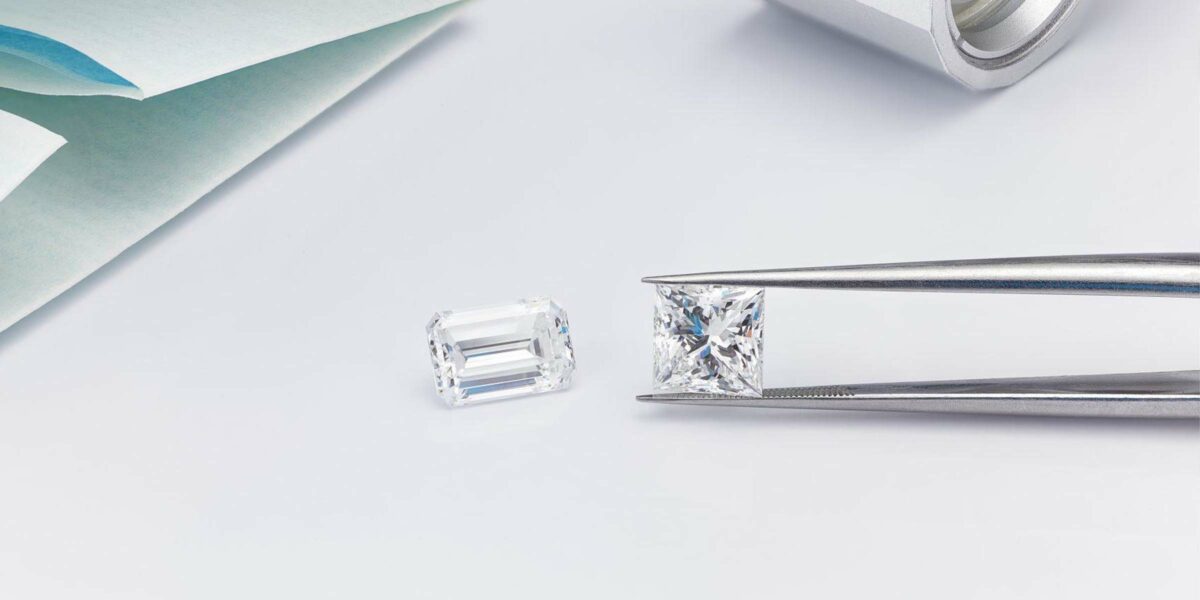When it comes to diamonds and jewels, bigger is better, right?
Well, not always.
Contrary to popular belief, size isn’t everything (although it certainly counts), and the most expensive diamonds aren’t always the largest. Instead, the quality and scarcity of rare gems are determined by the diamond grading scales established by the Gemological Institute of America (GIA) in the early 1940s and later introduced to the public by De Beers—a world-renown diamond company (it is the brand behind the iconic tagline ‘A Diamond Is Forever‘).
The diamond quality chart comprises the 4 Cs of diamond quality and gemstone grading. You’ve likely already heard of the 4 Cs of gem grading: cut, color, clarity, and carat (weight). But most of us are unaware of just how these characteristics affect the prices of valuable gems in our favorite jewelry pieces. The 4 Cs determine the quality of the stone. And, of course, the 4 Cs also determine the scarcity and value of various stones.
But unless you’re hunting down the most expensive engagement rings possible, you’re unlikely to be looking for the pinnacle of the diamond rating chart or the rarest grade of the gem. Rather, diamond selection is usually a balance between quality and affordability. Because diamonds are assessed under a microscope by expert gemologists, most flaws aren’t noticeable to the naked eye. If you want to prioritize size, you may be willing to accept a few near-invisible black marks. And if you want to prioritize scintillation, you may be happy with the subtlest yellow tint.
Either way, before you set your love in stone, read our ultimate guide to the 4 Cs of diamonds and gemstones to understand how to hit that elusive sweet spot between affluence and affordability, size and sparkle.
Gem grading and diamond quality: What are the 4 C’s of diamonds and gemstones
Most of us know the 4 C’s of diamonds: cut, clarity, color, and carat—diamonds are girls’ best friends, after all. But the 4 C’s don’t only apply to diamonds, the grading chart applies to all types of precious gems, albeit not in exactly the same way. For example, when it comes to color, diamonds are usually graded according to how near-colorless they are, while other gems are graded according to the stone’s distinctive hue, tone, and saturation.
The combination of the 4 C’s ultimately determines a stone’s relative rarity and value. But we can’t all afford the biggest, brightest diamond in the store. And shopping for a stone of any kind is usually about finding the right balance between cut, clarity, color and carat. Frome scintillation to size, here’s how each of the 4 C’s affects the quality and value of the stone.
Cut
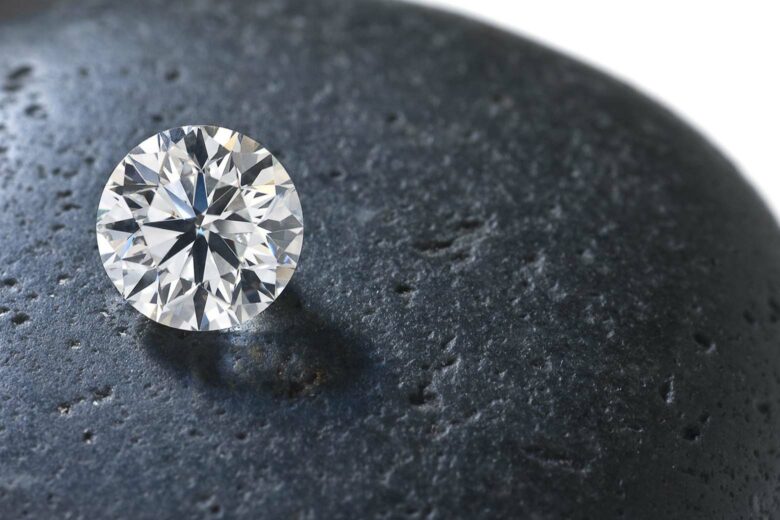
Cut is arguably the most influential factor when it comes to gem grading and the overall aesthetic of diamonds. The cut of the diamond is the workmanship that went into fashioning it and not the stone’s shape itself. It refers to the facets, symmetry, dimensions, and reflective qualities of the gemstone—all of which ultimately determine how the gem interacts with light. Why does this interaction matter? Well, the stone’s interaction with light ultimately determines the brilliance (the sparkliness) of the gem.
Ok, so most of us are after brilliance, scintillation, and sparkle. But how do we know where a diamond measures up relatively? The diamond cut chart is graded by the GIA according to the following scale: Excellent, Very Good, Good, Fair, and Poor. Naturally, an Excellent cut will be the most sparkly as it speaks to a stone that is perfectly faceted, proportioned, and polished for optimum brilliance. While a Poor cut diamond is extremely dull by comparison.
Diamond Cut Chart
| Grade | Category |
| Excellent | Ideal Cut / Most Brilliant |
| Good | Too Shallow / Poor Brilliance |
| Poor | Too Deep / Poor Brilliance |
We’ve already established that cut and shape are two different things. And while the cut of the diamond refers to the stone’s interaction with light (and basically determines the quality of a diamond’s sparkle), the shape of the diamond refers to the general silhouette of the stone when faced up.
There are two major groups for the shapes of diamonds: Round diamonds and Fancy Shaped diamonds. Because Round diamonds are the most popular and traditional cut in jewelry, they are placed in a category of their own. While Fancy Shaped diamonds range from squares to ovals and pears to just about any geometric shape. (Read our guide to the most popular diamond shapes for more details.)
Interestingly: brilliance is solely measured by the diamond’s cut. However, the shape of the diamond does play a role in the stone’s ability to be cut for maximum scintillation. For example, a Round Brilliant cut is renowned for achieving maximum sparkle. The round shape allows the greatest number of facets. And the more facets a diamond has, the more light bounces off the stone and returns to the eye—this is brilliance. On the other hand, a square-shaped diamond will not allow for the same number of facets to be fashioned into the diamond. And therefore, it does not hold the same potential for maximum scintillation.
The number of facets isn’t the only factor to influence how light reflects off the stone. The diamond cut chart takes into account various other characteristics. Symmetry is an important one. A diamond with poor symmetry may absorb light in some areas and reflect too much of it in others. And it can also accentuate any flaws and coloration in the stone. Similarly, the dimensions or proportions of the diamond also affect the sizes, shapes, and angles of the stone’s facets and, therefore, will influence how it reflects light.
Diamonds are best known for their uncanny ability to reflect light, making them the sparkliest and most sought-after precious stones. However, the cut grading chart doesn’t only apply to diamonds, it can be applied to all kinds of gemstones. Rubies, emeralds, and amethysts may not ever scintillate in quite the same way as diamonds, but the same rules apply. A multi-faceted round ruby will sparkle a lot more than an asymmetrical square ruby, in the same way that an Excellent cut diamond will sparkle a lot more than a Poor cut diamond.
Color
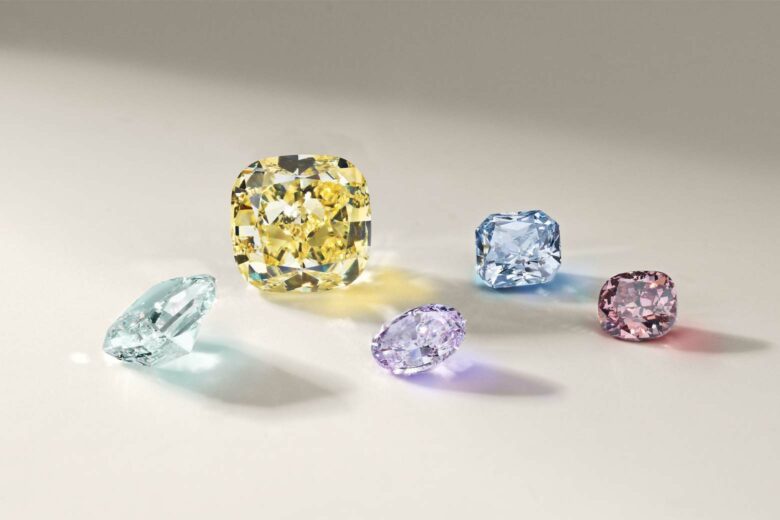
When it comes to color, diamond grades are determined by how close the diamond comes to colorless, while other gems are described according to the stone’s unique hue, tone and saturation.
Diamond color grades fall on a scale from D to Z, with D being completely colorless and Z having a light yellow hue. The top three grades (D-F) are all colorless and only vary slightly in transparency. The next four grades (G-J) are almost colorless to the naked eye. But when inspected under a microscope by an expert gemologist, extremely subtle tints are evident. Naturally, D-F graded diamonds are by far the most expensive. And because you can barely see the difference between a D color diamond and a G color diamond, we would recommend opting for the latter. Especially if size is important to you and you want to get the most out of your budget.
Diamond Color Scale
When it comes to diamonds, the less color, the higher the grade.
| Color Grade | Category |
| D-F | Colorless |
| G-J | Near Colorless |
| K-M | Faint |
| N-R | Very Light |
| S-Z | Light |
Color grades for colored gems are not quite as simple. Because every precious gem is different, it no longer becomes a matter of determining how close to colorless it is. But rather, color gems are graded according to scarcity. For example, amethysts (one of the popular birthstones) that are richer and deeper in hue than other amethysts will likely command greater attention and are therefore deemed more valuable and graded higher. But just because they are more scarce, doesn’t make them better. And if you love pastel tones, you may actually prefer an amethyst that has a more common, lighter hue.
Typically gemologists describe gem colors according to three characteristics: hue, tone and saturation. Hue is often mistaken for color and refers to the actual chroma of the stone. This includes all primary and secondary colors, but not brown, black, white or gray—these are regarded as tones. Tone refers to the lightness or darkness of the hue, whilst saturation refers to the intensity of the hue. Again, there are no hard and fast rules when it comes to grading colored gems, but pure colors are usually considered more valuable. Just think of a pure red ruby as more valuable than an orangish red ruby, and you kind of get the picture.
Clarity
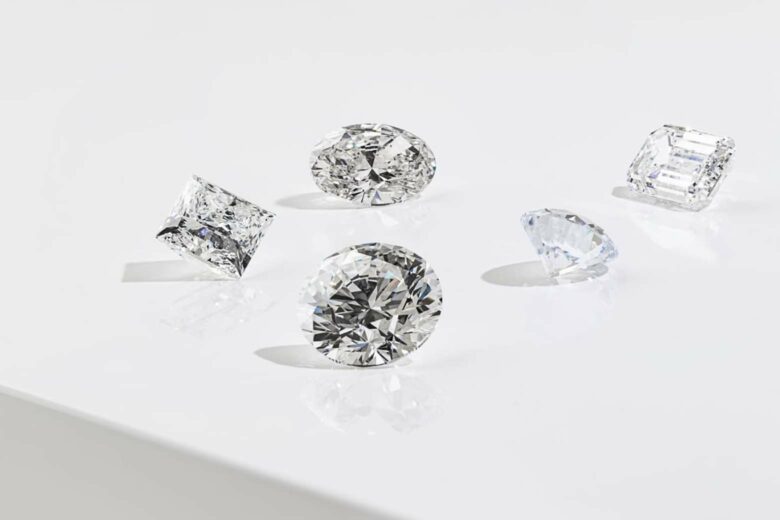
Clarity refers to the presence of inclusions or blemishes. Inclusions are internal imperfections. They vary from little bits of minerals to hollow areas and fractures. And they affect the stone’s sparkle by interfering with the free passage of light. Blemishes are external flaws and can similarly affect the sparkle of a stone. Not all inclusions and blemishes are problematic. And some types have a much greater impact on scintillation and durability than others.
Some blemishes are nothing more than almost-invisible marks that merely affect the aesthetic of the stone under magnification. But others can affect the structural integrity of the stone. Often fractures and veils that go deeper into the stone are indicative of gems that may be prone to breakage. And whilst this might be fine for jewelry that doesn’t receive much abuse—such as necklaces and brooches—if you’re shopping for an engagement ring, you’ll likely want something more durable.
Like color, you can use lower diamond clarity grades to your advantage when it comes to pricing. Graded on a scale of 0-10 (flawless to included), there are several diamond clarity grades that indicate imperfections that are invisible to the naked eye. And whilst you cannot see the difference (unless under a microscope), slightly flawed diamonds are a lot more affordable than flawless diamonds.
Diamond Clarity Chart
| Clarity Grade | Category |
| FL | Flawless |
| IF | Internally Flawless |
| VVS1, VVS2 | Very Very Slightly Included |
| VS1, VS2 | Very Slightly Included |
| SI1 – SI2, SI3 | Slightly Included |
| I1, I2 – I3 | Included |
Similarly, colored gem clarity grades determine whether a colored gem is eye-clean or not. They are then categorized as Type I gems (eye-clean), Type II gems (usually included) or Type III gems (always included). Eye-visible inclusions can lower a gem’s value, but not always equally. Comparing gem’s amongst themselves, an eye-clean stone is usually more expensive than an included stone. But when comparing stone clarity between different kinds of gems, this isn’t always the case.
Emeralds are case in point. Falling into the Type III category (always included), you cannot compare an Emerald’s clarity with any other gem. Large eye-clean Emeralds are extremely rare. And if you couldn’t accept any visible inclusions, you would always be limited to very small stones. Yet, as one of the 4 precious gemstones, Emeralds still remain some of the most sought-after (and expensive) gems regardless of the stone’s inherent flaws.
Carat
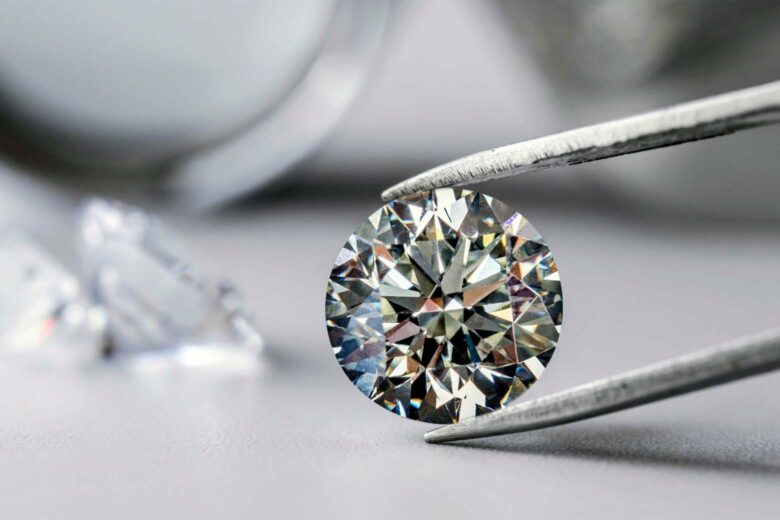
Ah, carat—a term we are sure that you are not unfamiliar with. But do you know what you’re really saying when you express your wishes for a 5-carat diamond ring? Nope, the carat of a diamond doesn’t actually refer to the size of the stone, it refers to the weight. Sure, the two are often congruent, but not always. A stone with a larger weight may actually look larger than the carat suggests due to the dimensions—which are measured in millimeters.
Carat is a measurement of weight used specifically for diamonds and other gemstones. One carat is equal to 200 milligrams and is subdivided into 100 points. This allows for very precise measuring to the hundredth decimal place. And because the weight of the diamond impacts its value enormously, every decimal place counts.
Naturally, the larger the diamond, the more expensive it is. This increase isn’t always linear, and a diamond that is double the size of another can be more than four times the price. The carat of a diamond also impacts how the cut, color, and clarity impact the price of the stone. For example, a flawless 2-carat diamond is a lot rarer (and a lot more expensive) than a 1-carat flawless diamond.
But where does “carat” come from? The term is derived from the word “carob”, because, according to ancient history, carob seeds were used as a reference for diamond weight and diamond grading. The measurement unit may have originally been used for diamonds, but today it can be used for all precious gemstones. However, the price difference between gems of different weights is very rarely as significant as that between different diamond weights.
Sparkle? Transparency? Perfection? Or size? Some have it all, however, most of us have to pick wisely. They’re still all our best friends, though.
Frequently asked questions about the 4Cs
Diamonds are sold by weight (carat), not size. A five-carat diamond weighs one gram. But it’s the cut and quality of the diamond that will determine the actual and apparent size, as well as its brightness. As a reference, though, a five-carat brilliant round cut diamond (the most popular diamond shape) will have a diameter of approximately 11mm, covering almost 70% of the average woman’s finger space. To put that in perspective, the average engagement ring size is 6.5mm for a one-carat brilliant round cut.
The 4 Cs of diamonds refer to cut, color, clarity, and carat. The combination of these factors affects diamond ratings and is strictly assessed by the GIA. Cut affects the stone’s sparkle. Color affects the stone’s transparency. Clarity determines the presence of flaws. And carat is a measure of the stone’s weight. See our guide to the 4Cs of diamonds for more information about gem grading.
The 4 C’s of diamonds refer to cut, color, clarity and carat. Carat refers to the weight of the diamond and is the most common way to describe the gemstone. But cut is arguably the most important characteristic. The cut of the diamond refers to how the stone reflects light. And ultimately, it determines how sparkly the stone is.
